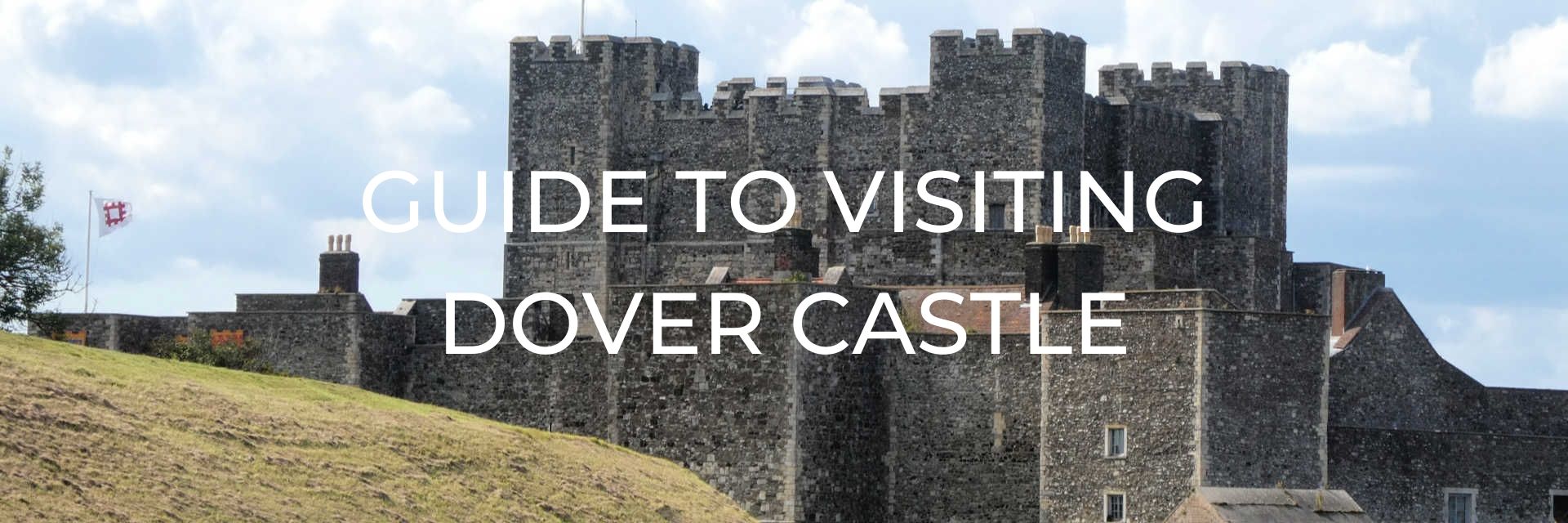
Sitting atop the famous white cliffs of Dover since the 12th century and described as the ‘Key to England’ is the formidable Dover Castle. But there is far more to Dover Castle than the castle itself! The secret wartime tunnels, roman lighthouse and St Mary in Castro church all make Dover Castle one of the best castles to visit in England.
Want to save this for later? Click the Pinterest button on the left for a pinnable image!
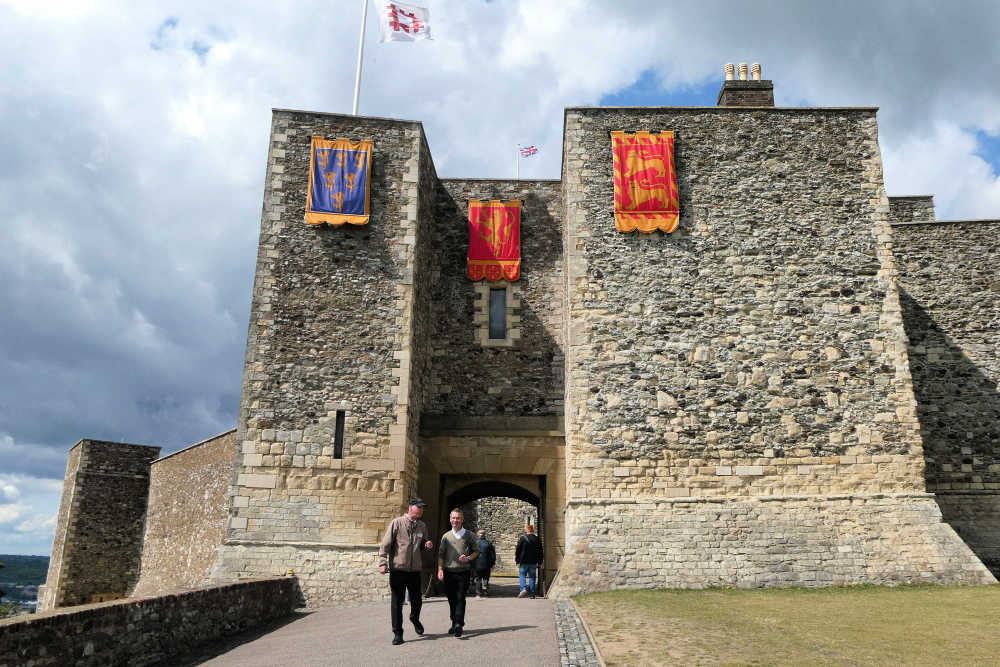
This post may contain affiliate links. Please read our full disclosure policy here.
Guarding the shortest sea crossing between England and continental Europe for over 900 years, Dover Castle has never been conquered. It also lays claim to being England’s largest castle covering an area of around 30 acres and contains England’s largest and most expensive keep.
Fortifications on the site began almost 2,000 years ago when the Romans built a hill fort. The present-day castle began to take shape during the reign of Henry II who had the great keep and fortified walls constructed. Since then the castle has stood guard atop the white cliffs defying all attempts to topple it.
HIGHLIGHTS OF DOVER CASTLE
Impressive though the castle and its history are, there is much more to see and do at Dover Castle. From its role in the defence of Britain during World War II to the Roman lighthouse and St Mary in Castro church there is plenty to see and do to keep you busy all day.
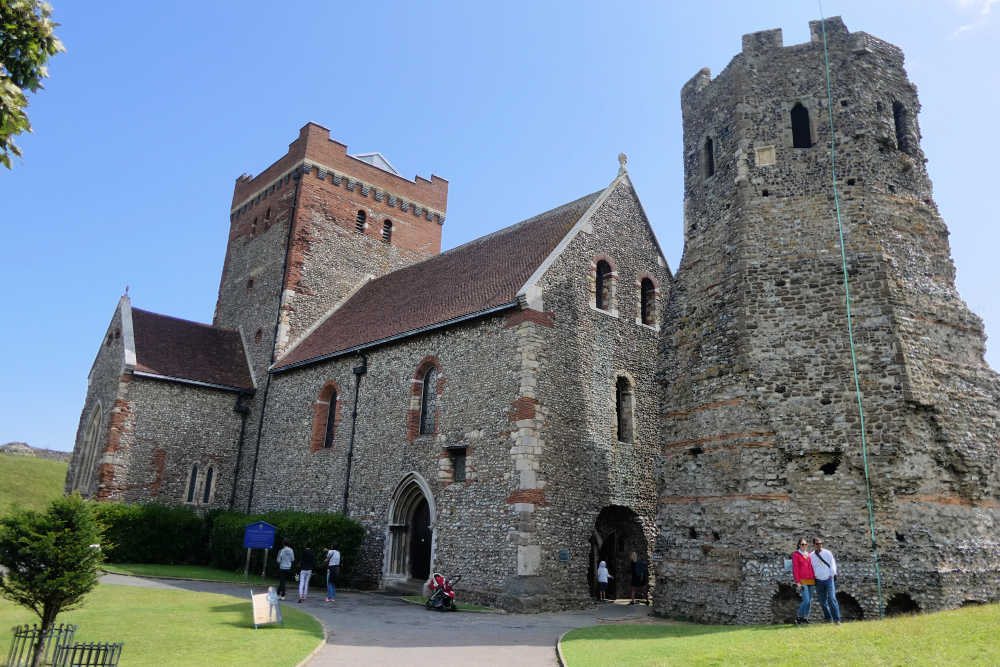
ROMAN LIGHTHOUSE
The Romans erected a pharos, or lighthouse, inside their fort in about 125AD. They also built a second lighthouse across the Dover harbour but only the one on the grounds at Dover Castle remains.
The lighthouse is octagonal in shape and built in five layers out of ragstone and flint with brick archways. The first four layers were built by the Romans and the top layer was added around 1430 to act as the bell tower for St Mary in Castro church beside it. The lighthouse is in pretty good condition considering it is, after all, almost 2000 years old! Inside it is hollow and you can go in and look around.
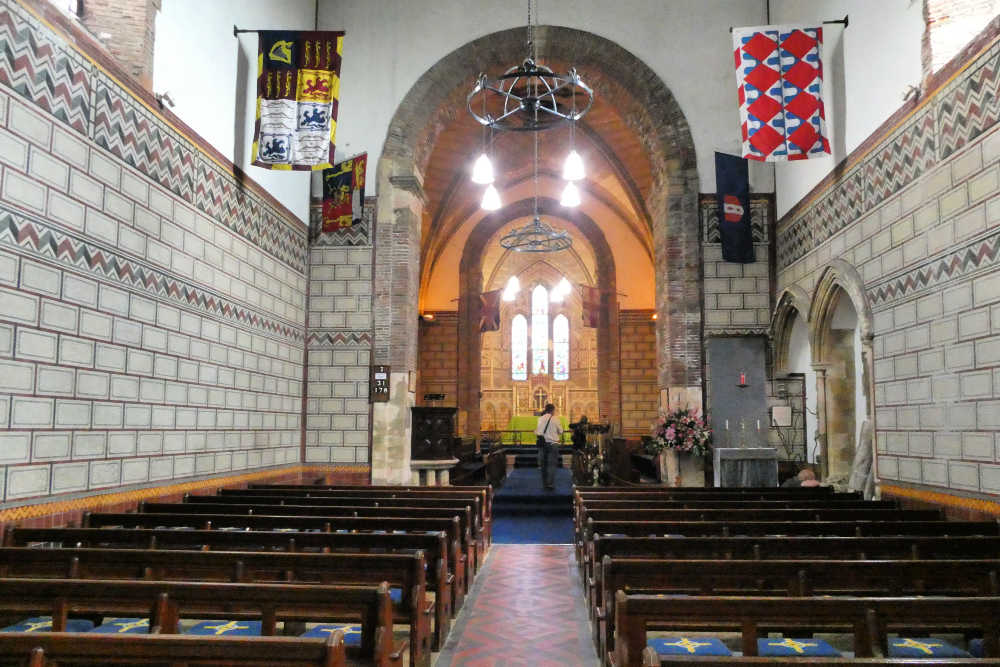
ST MARY IN CASTRO CHURCH
After the Romans moved out the Saxons moved in and around 1000 AD they constructed the church of St Mary in Castro, which was later remodelled in the Victorian period. The church was used by the garrison of Dover Castle and held sacred relics during medieval times.
The building was restored in 1582 but then fell into decay again in the 17th century and was little more than a crumbling shell by the 18th century. After being used as a coal store the church was finally restored in 1862 and today the interior includes a mosaic alter and tiled floors.
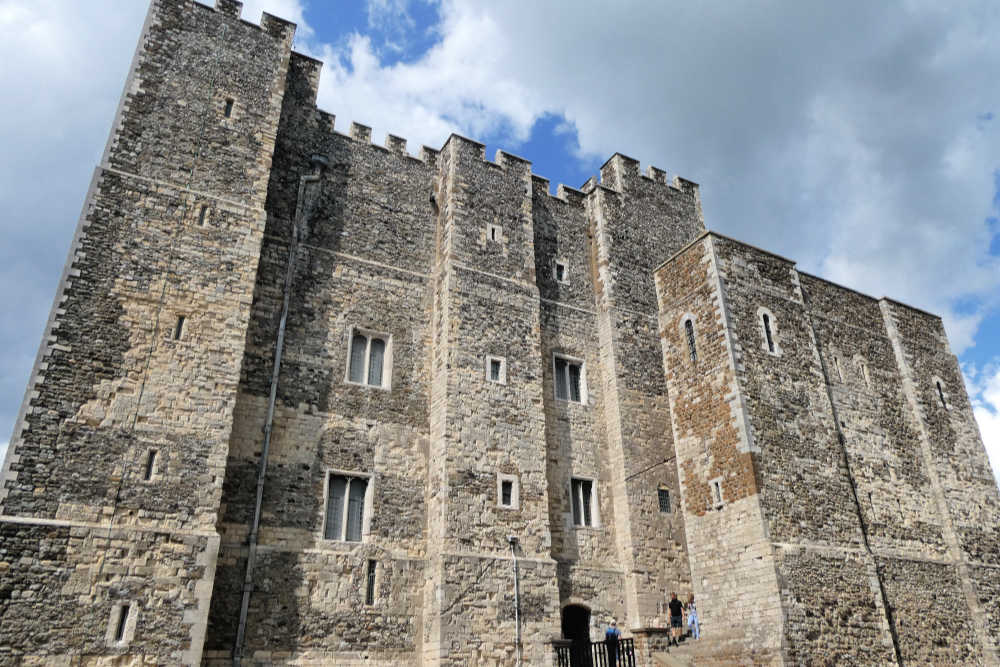
GREAT TOWER
Begun in 1066, but mainly a product of King Henry II’s expansion in 1170, the Great Tower stands 25 m (183 ft) at its tallest with walls as thick as 6.5m (21ft) in places. It was seen as a symbol of “kingly power and authority” as it guarded the gateway to the realm.
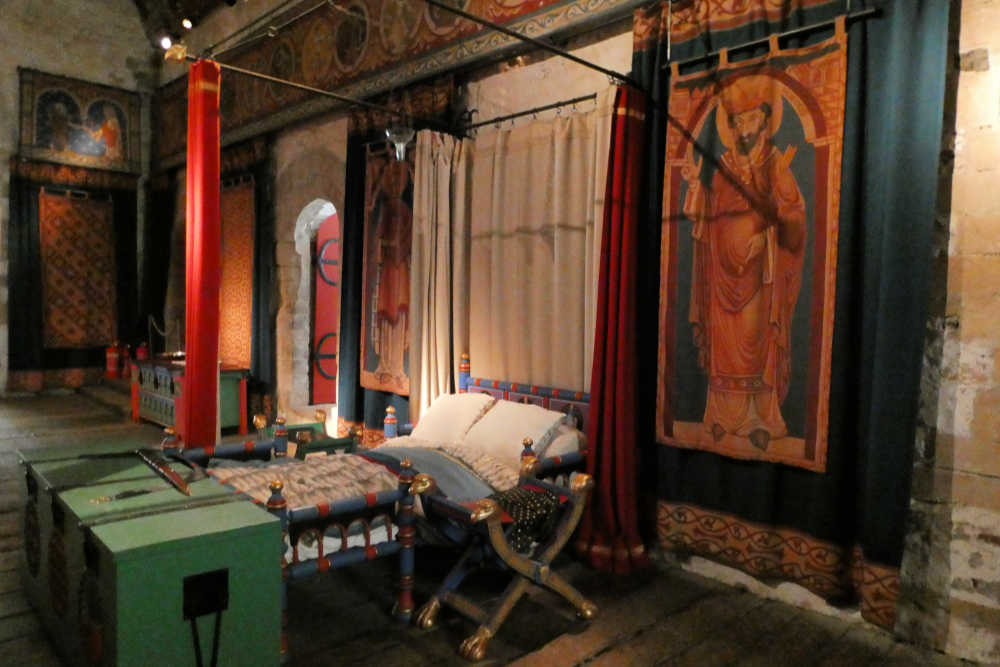
The Great Tower was used for royal ceremony and to house King Henry II’s travelling court but the most important use was as a military post as the castle was garrisoned uninterruptedly from 1066 until 1958. From 1740 through 1945 the castle’s defences have been updated in response to every European war involving Britain.
The interior of the Great Tower, or keep, has been renovated but has been set to look like it would have when the castle was in operation and is very well done. You can spend quite a long time wandering through rooms set up to look like cooking and storage rooms, great dining halls, long damp passageways between rooms that overlooked the grounds, and even cosy bedchambers that had roaring fires going in their fireplaces.
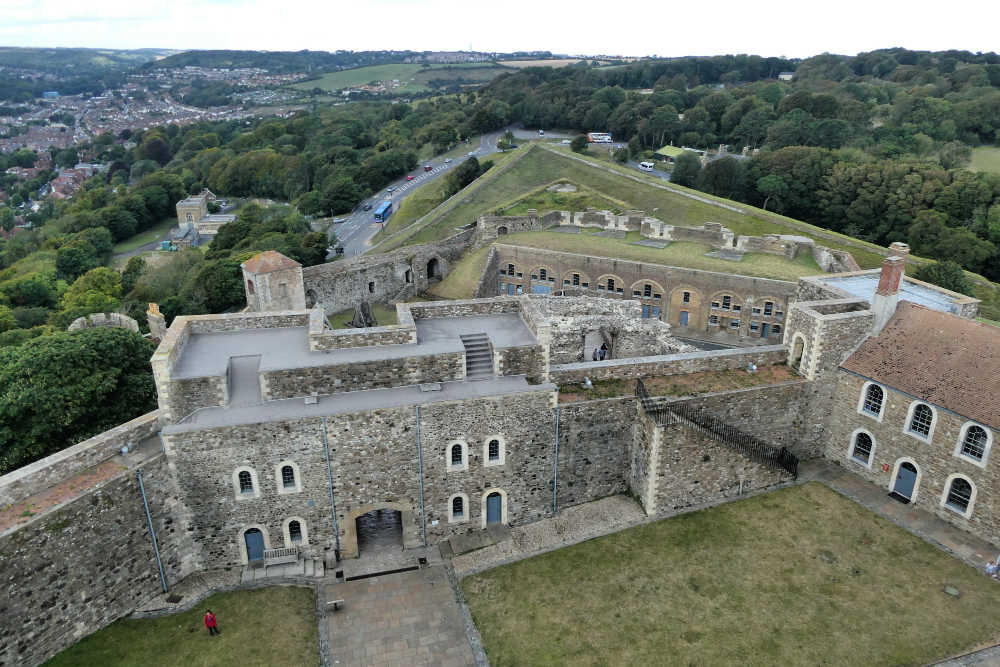
It can be quite a surprise if you aren’t expecting it to smell smoke and then upon entering one of those bedchambers see the glorious open fire, especially if you visit on a cold or wet day. It’s so well done you can almost imagine yourself back in those times.
If you climb right to the top of the great tower you are rewarded by beautiful views of the castle grounds, the town of Dover and out across the English Channel.
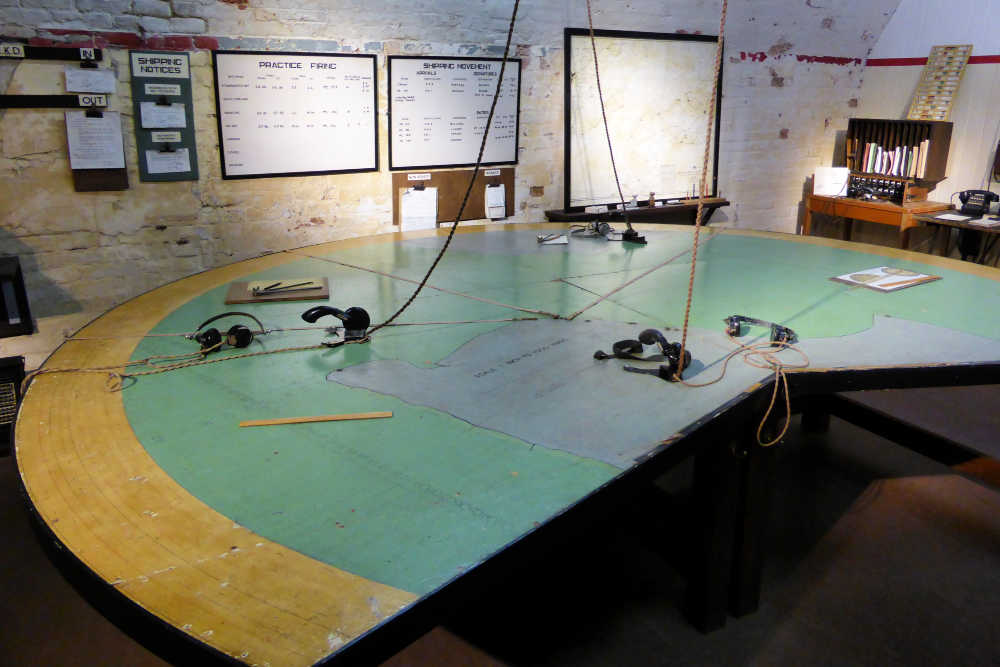
SECRET WARTIME TUNNELS
In the Middle Ages, tunnels were constructed under Dover Castle to be used as a protected line of communication for the soldiers stationed in the northern outposts and to allow for the garrison to gather before attacks without being seen.
Later during the Napoleonic Wars, the tunnels were expanded to prepare the castle for a French invasion. Seven tunnels were dug to serve as barracks for soldiers who had already filled up the castle and the town. These tunnels were capable of holding 2,000 troops and are the only underground barracks ever built in Britain.
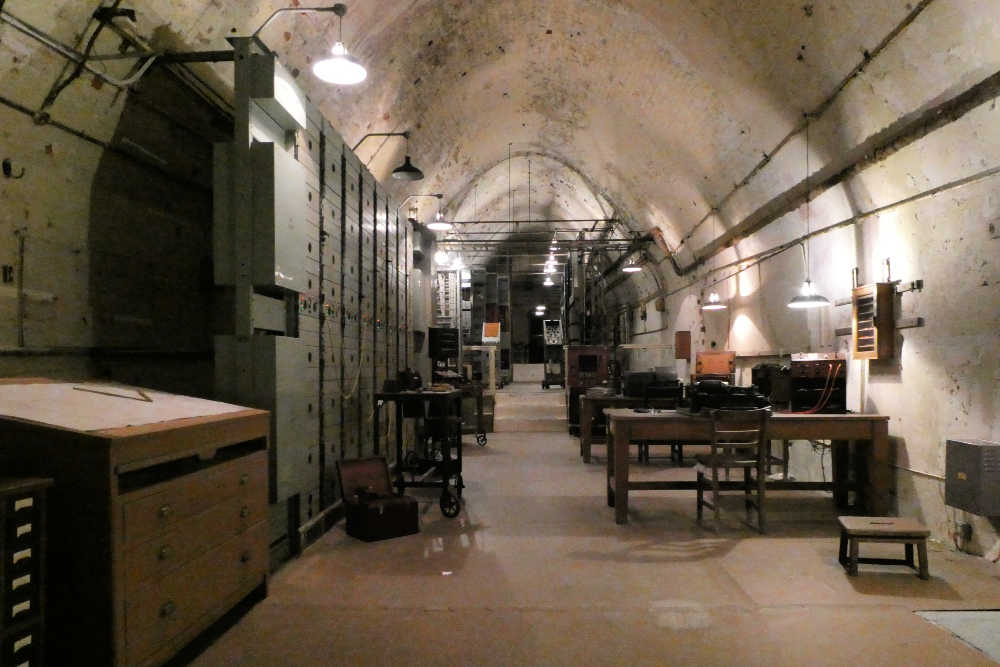
In WWII the tunnels were used again as the centre from which Admiral Ramsay and his team worked around the clock for nine days on Operation Dynamo – the evacuation of the British Expeditionary Force and French troops from the beaches of Dunkirk. It was estimated that 45,000 troops could be brought back to Britain but on May 26th there were about 400,000 troops awaiting rescue on the beaches.
By June 4th, nearly all were evacuated with 338,000 men brought back. Admiral Ramsay used as many Royal Navy vessels as the could gather, along with a now-famous flotilla of ‘little ships’- the civilian and merchant boats. Churchill called it a ‘miracle of deliverance‘.
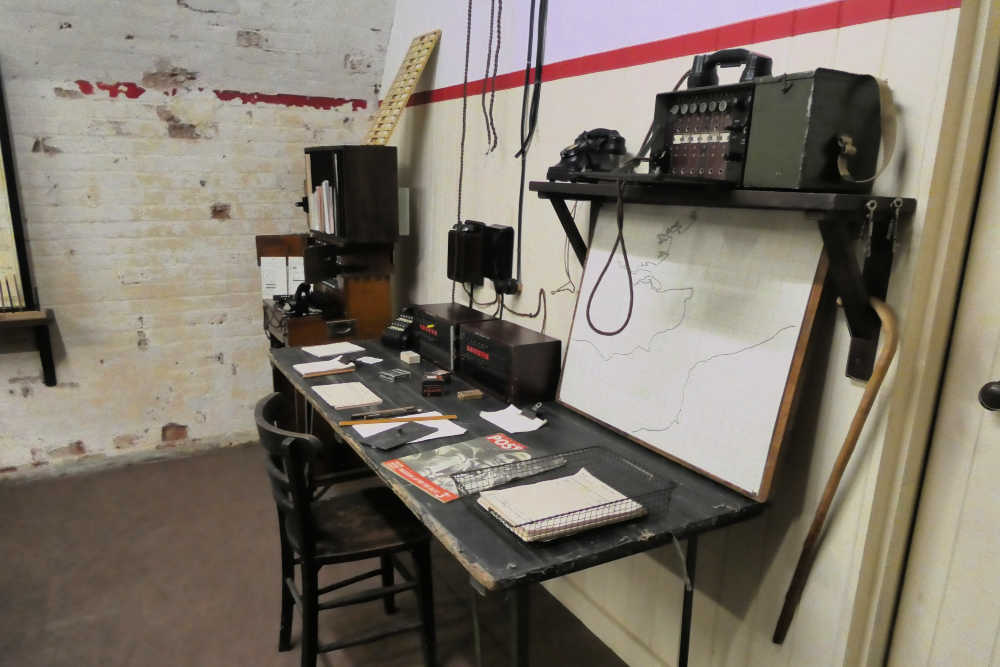
During the Cold War, the tunnels were expanded again to form a Regional Centre of Government in the event of nuclear war but with the fall of the Berlin Wall in 1989, the need for this facility decreased. In the early 1990s, it was decommissioned and areas of the tunnels were open to the public. When visiting you have to take the guided tour.
It’s a really good tour and well-timed to keep you moving, but without being rushed as you visit communication centres, shelters and admin areas. There were also many places along the tour where they projected video along the walls of the tunnel sometimes making it seem like you were in the room as actual events played out as the shadows of the officers went about their duties. This all helps to tell the story of how the tunnels were used during World War II.
UNDERGROUND HOSPITAL
Part of the tunnels cut into the rock underneath Dover Castle and behind the famous white cliffs was converted into a hospital in 1941. Visitors to the hospital today follow the story of an injured pilot fighting for his life and the men and women who worked to save people’s lives. The tour uses a sound and light show to try to give visitors an inkling as to the conditions in the hospital as bombs dropped outside. You see several rooms as they would have been during World War II, including the kitchens, operating areas and dormitories.
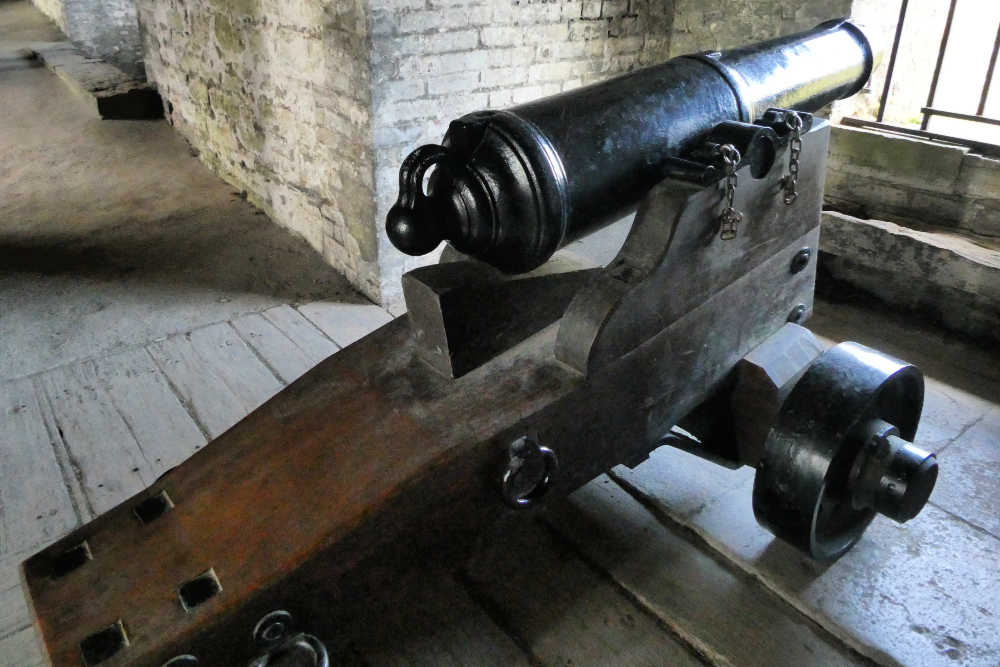
MEDIEVAL TUNNELS
The medieval tunnels were dug during and after the siege of 1216. The castle was under siege by Prince Louis of France who was invited to take over the English crown by barons fighting King John. The castle withstood the siege and remained one of the few parts of Eastern England to remain loyal to King John.
The medieval tunnels were used to offer improved and covert defences to the castle to ensure the ‘Key to England’ would not be turned and the country unlocked. Today the medieval tunnels wind under the castle and visitors can explore along them, peering out at various points past cannons.
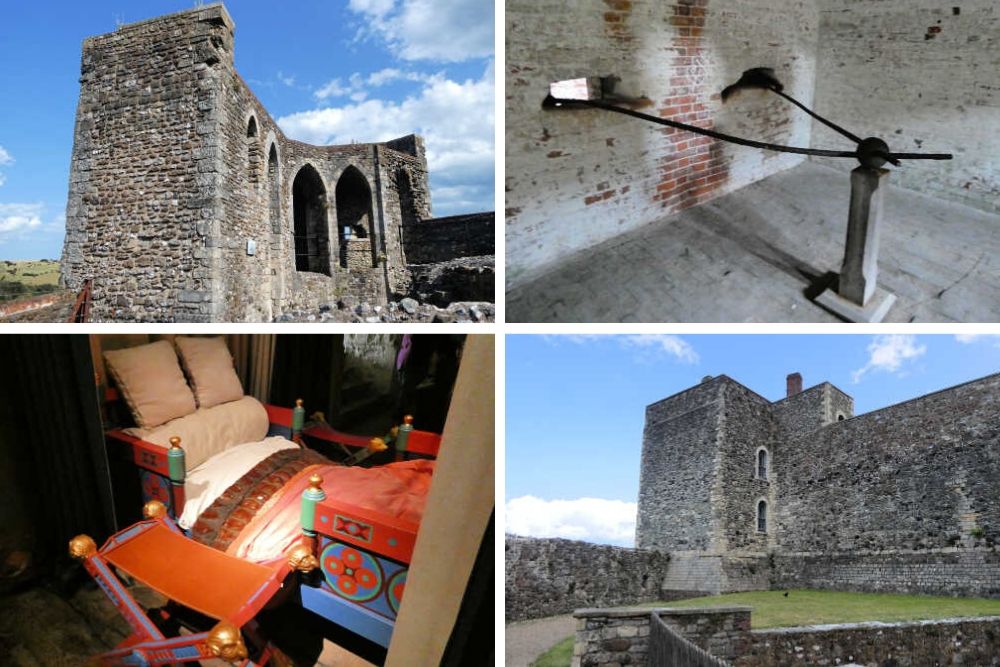
PLAN YOUR VISIT TO DOVER CASTLE
Information last updated December 2019
HOW TO GET THERE
Dover Castle can be found at Castle Hill Rd, Dover CT16 1HU.
The nearest station is Dover Priory (southeastern) which is about 25 minutes walk away from the castle. Buses 15, 15X, 80, 80A and 93 all stop less than ten-minutes walk away from the castle.
Free parking is available within the castle.
HELPFUL LINK:
- If you need an app that will navigate you around whether walking, driving or using public transport and even works offline then click for a guide about how to use Here WeGo.
OPENING HOURS
Opening hours are 1000- 1800 from March to September, 1000-1700 in October and 1000-1600, only at weekends, for the rest of the year. The castle does open during the week to coincide with school holidays. Please check the Dover Castle website for full opening times.
Whilst the keep, wartime tunnels and some other parts of the castle are indoors, you will spend a large part of the time outside during your visit. It may, therefore, be advisable to visit during more pleasant weather if possible.
We would recommend you aim to spend at least half a day at the castle, but you can easily spend most of the day there.
HOW TO BUY TICKETS & SAVE MONEY ON ADMISSION
Basic admission prices are £20.90 for adults, £12.50 for children 5-17 years and £18.80 for over senior citizens and students. One carer per disabled visitor can visit for free. A family ticket for 2 adults and up to 3 children is £54.30. Gift-Aid tickets which allow the castle to reclaim tax for UK visitors cost 10% extra.
If you are travelling by train to the castle you may also be eligible for great savings with the 2 for 1 London offer by Days Out Guide. This offer is not available all the time but it is well worth a quick look on their website to see if it’s available for when you’d like to visit.
Entry to the castle is free for English Heritage members. Membership is £60 for an adult for 1 year with discounts available for students, senior citizens and family memberships.
Overseas visitors can purchase an English Heritage Overseas Visitor Pass which allows unlimited access to English Heritage properties for 9 or 16 days. A 9-day pass costs £35 for 1 adult, £60 for 2 adults and £65 for a family. A 16-day pass costs £43 for 1 adult, £70 for 2 adults and £75 for a family.
ACCESSIBILITY
As a military installation, Dover Castle was not built for accessibility but as many areas as possible have been updated to be made accessible, however, the underground hospital and the great tower above the ground floor are not accessible without climbing stairs. Some areas of the castle involve steep slopes which may be difficult to navigate; these are clearly marked on the maps.
A land train runs around the site offering transport between the key parts of the castle site.
For full accessibility details please visit the Dover Castle Accessibility page.
IS DOVER CASTLE WORTH THE VISIT?
As one of the best-preserved castles in England, Dover Castle is worth a visit just for the castle. But once you add in the church, lighthouse and the history of the secret wartime tunnels and underground hospital, the whole site elevates to a new level. As long as you expect to be there for at least half a day, but preferably the whole day if possible, you can explore all the different parts of the castle.
See what others think of this attraction on Trip Advisor.
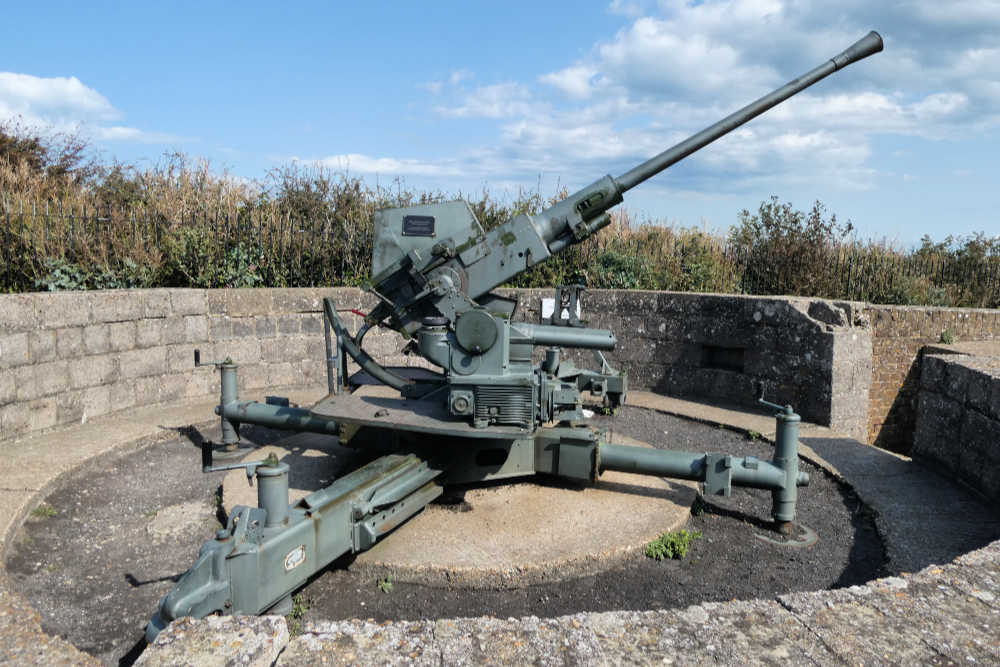
ADD TO YOUR DOVER ITINERARY
The closest point in England to Continental Europe, Dover has long been seen as the key to England. The castle dominates the town and was used defensively right up until after the second world war.
-
The Battle of Britain Memorial is the national memorial to “The Few” who defended the United Kingdom against the Luftwaffe during World War II and played a major role in ensuring the UK was not invaded.
-
The famous White Cliffs of Dover are a great place to walk and see this iconic symbol of England for yourself.
-
While exploring the White Cliffs, take a trip down into Fan Bay Deep Shelter, a network of tunnels which supported defensive gun batteries above. You’ll also get to see two sound mirrors, a pre-radar, acoustic warning system of approaching aircraft.
-
Journey 13.5 miles along the one-third scale Romney, Hythe and Dymchurch railway from Hythe to Dungeness and its famous marshes and nuclear power station.
-
The impressive Western Heights were constructed during Napoleonic times to strengthen England’s defences. To get troops from the heights and the harbour the Grand Shaft was constructed, this contains three staircases in a helix to enable the rapid movement of troops.
RELATED ATTRACTIONS IN THE UK
Castles can be found across the United Kingdom, from ruins to castles which are still lived in, they all have a story to tell about the country’s history.
- Step further back in time to the 11th century and visit the Tower of London to see the Crown Jewels, the White Tower, and take a tour by one of the Yeoman Warders.
- The beautiful moated Bodiam Castle is a wonderful visit and what better way to arrive than by steam train on the Kent & East Sussex Railway.
- The oldest and largest inhabited castle in the world, Windsor Castle was founded by William the Conqueror in the 11th century.
- Dominating the skyline of Edinburgh, Edinburgh Castle sits atop an inactive volcano. In its long history, it has been a Royal Residence and a prison and is home to the Scottish Crown Jewels.
- Tintagel Castle has long been associated with the mythical Merlin and visitors can explore the castle ruins as well as Merlin’s Cave on the beach below.
- From Norman fortresses to medieval strongholds to the home of the current Queen – England is bursting with castles to visit. Check out these 14 other beautiful and historic castles in England!
Want to save this for later? Click the Pinterest button on the left for a pinnable image!
RESOURCES | PLAN YOUR TRIP TO DOVER
To book flights, rental cars, accommodations, and activities for your trip, please check out our recommended travel providers, favourite apps and websites.
These are a few tours that we would recommend for your trip to Dover.
Some of the links in the post above are affiliate links. This means if you click on the link and purchase the item, we will receive an affiliate commission but this does not affect the price to you. Please read our full disclosure policy here.
